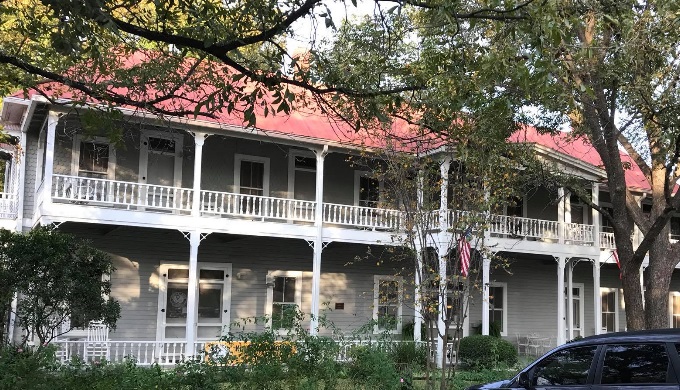Though today, Kingsland is a relatively small town, catering to weekend and summer tourists, it once ranked as a large town along a major rail line, but its history has always been intrinsically tied to people flocking to this town to get away from the city. Kingsland history has seen highs and lows for the area, including a time the town was almost wiped out, but the strong Texas streak in the residents kept this little community alive.
History
Kingsland History From a Small River Town to a Tourist Getaway
A Second Kingsville?

Photo: Wikimedia Commons
Kingsland history began in 1879 when Martin King, Sr., and J.M. Trussell hoped to establish a town where the Llano and Colorado Rivers met. They purchased the land and began to work it, but their efforts were stalled by King’s death. In 1883, his widow, Nancy Jane King, completed the surveying and plotting of the town, naming it Kingsville in her late husband’s honor. This name did not stick, though. When the town sought a post office, it had to change its name. Two towns in Texas couldn’t have the same name, and Kingsville had already been established south of Corpus Christi.
The Early Years

Photo: Facebook/Susie Barthule Williamson
From its founding, a cotton gin provided the main means of the economy for the town, but thanks to the nearby rivers and the picturesque rolling hills, a railroad line came to Kingsland. In 1892, the Austin and Northwestern Railroad from Austin to Llano passed through Kingsland, greatly contributing to the town’s history. And if you visit today, you’ll still see remnants of the time the railroads were king in Texas.
The Influence of the Railroad on Kingsland History

Photo: Facebook/Diana Faith Cadena
Kingsland really began to boom after the railroad came to town. In 1901, now known as Kingsland, the town became a popular tourist destination. The railroad constructed a hotel along the line, which still stands today as a privately-run facility called the Antlers Inn. The century-old cabins on the hotel’s property were once places for railroad employees to stay overnight.
Natural Disaster Devastates the Town

Photo: Facebook/Jay Fleschner
Kingsland thrived until 1922, when a raging fire swept through town, consuming many of the buildings, including the original train depot. After this event, many people left, and the population dropped from its 1907 amount of 750 to 150 by 1925. Though the Great Depression likely influenced the town’s population, it did bounce back, thanks to the restful location and tourism.
A Revitalization

Photo: Wikimedia Commons
Kingsland history would be incomplete without mentioning the creation of Granite Shoals Lake in 1950, which later became known as Lake LBJ in 1965. The creation of the lake opened recreation activities for the area, and many moved to the Kingsland area for retirement. With so many older Texans coming to the area, new jobs opened up as the increased population required the creation of medical facilities, a community center, nursing homes, churches, and restaurants.
Kingsland Today

Photo: Wikimedia Commons
Today, Kingsland still caters to tourists, but it has grown significantly. The 2000 census showed Kingsland had a population of 4,584 people, but the Kingsland Chamber of Commerce claims 10,000 residents call the area home today. Though Kingsland history has been rocky, this little Hill Country town has managed to survive and thrive.
References:
Texas State Historical Association: Kingsland, Texas
Kingsland Chamber of Commerce: History
Daily Trib: Dig into History at Archaeological Site in Kingsland



